Content may contain affiliate links. When you shop the links, I receive a small commission at no cost to you. Thank you for supporting my small business.
Looking for the perfect light gray with just enough edge to feel modern—without veering cold or sterile? Sherwin Williams Passive (SW 7064) might just be your match.
Passive (SW 7064) is a light, cool-toned gray with subtle blue-violet undertones. In this post, you’ll learn how it behaves in different lighting, how it compares to similar grays, where it works best—and how to pair it beautifully throughout your home.
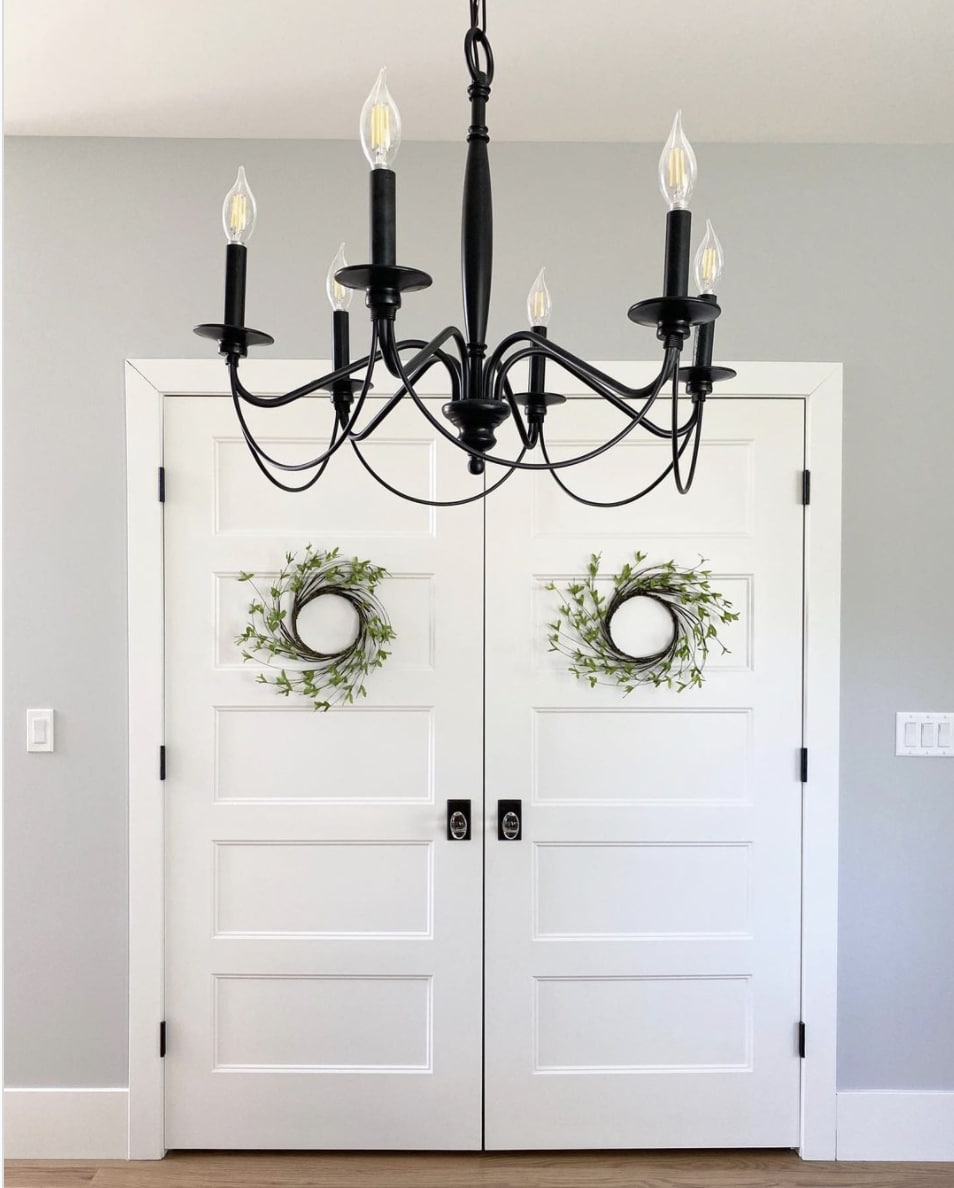
What Color is Sherwin Williams Passive?
Sherwin Williams Passive is a light-to-mid gray with a cool undertone and a slightly moody, stormy feel. It’s not icy or steely like some grays, and depending on the light, it can swing blue, purple, or even a touch green.
Quick Snapshot
- Trim Pairing: Crisp whites like SW Pure White or Extra White
- Type: Cool gray
- LRV: 60 (Light Reflectance Value)
- Undertones: Blue-violet, with occasional green flashes
- Best Use: Well-lit rooms, cabinetry, trim, exteriors with contrast

Passive in Real Homes: What to Expect
Paint swatches don’t tell the full story. Here’s how Passive plays out in different types of rooms:
- South-Facing Rooms: Passive will appear lighter and more balanced—still cool, but crisp and calming.
- North-Facing Rooms: Expect a stronger blue or violet undertone. Passive might feel icier in these spaces.
- East/West-Facing Rooms: You’ll notice shifts throughout the day—cooler in the morning (east) and warmer by late afternoon (west).
- Low-Light Rooms: Be cautious. Without good lighting, Passive can look flat or dingy. Add warm lighting to balance it out.
jenna’s Tip
Try Passive in a room with both overhead and sconce lighting to create dimensionality – layered lighting helps this color stay dynamic.
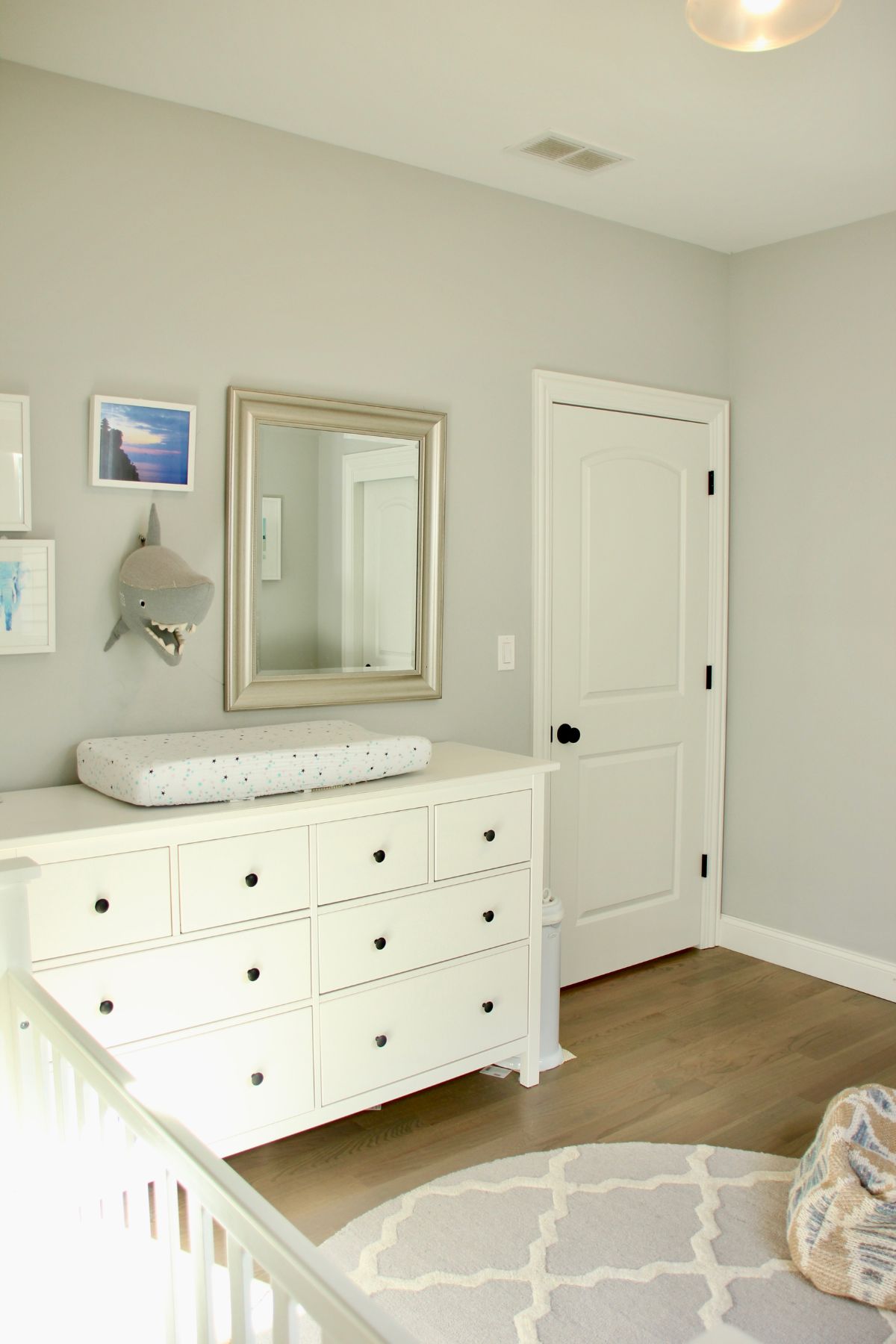
What are Passive’s Dominant Undertones?
Yes, Passive is a gray—but it’s far from neutral. You’ll see:
- Blue in bright, natural light
- Purple-violet in cool artificial lighting
- A hint of green when paired with warm-toned floors or wood
This is what makes Passive so tricky—and so interesting. You HAVE to sample it in your home before committing.
jenna’s Tip
- Paint it on a large white foam board (or use a peel and stick sample) and move it around the room throughout the day to see the color shift as the light changes.
What is the LRV of SW Passive?
Passive’s Light Reflectance Value is 60, putting it firmly in the “light” range – though it’s on the deeper side of light.
Why that’s important:
- It’s a great alternative if something like Agreeable Gray feels too warm or Repose Gray feels too brown.
- It won’t completely wash out in bright rooms like some off-whites or super light grays.
- It might feel too dark or flat in rooms with poor lighting.
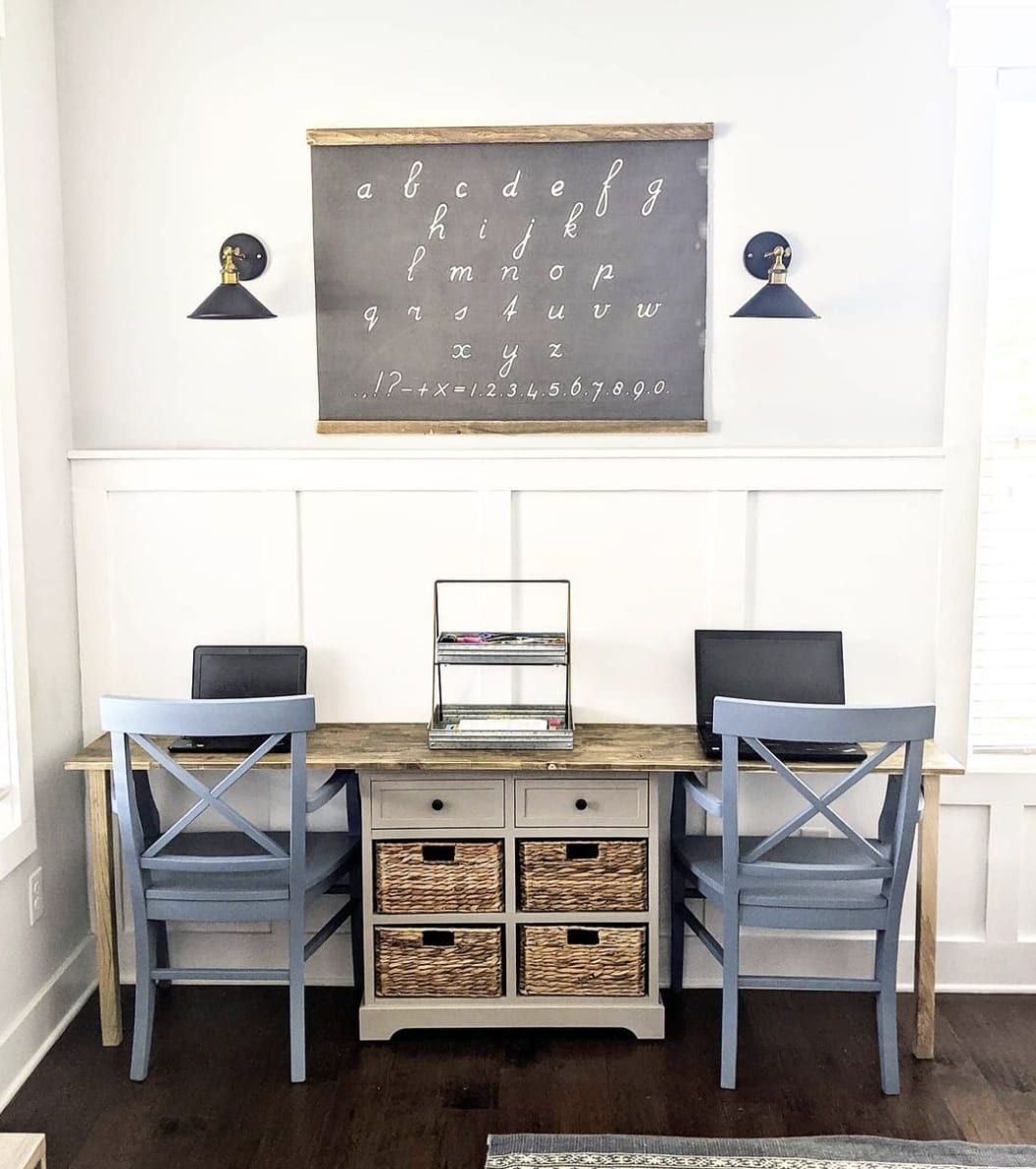
Don’t Forget To Always Use Real Paint Samples!
Don’t forget – no matter what you’ve read or photos you’ve seen online, it’s really important to sample paint colors in your home before committing!
Samplize provides peel and stick paint samples made with real paint, that are easy to move around your home, and cheaper than buying a gazillion paint pots! It’s the only way I buy paint samples.
Best Trim Colors for Passive
Want to keep things crisp and clean? Go for:
- Sherwin Williams Extra White (SW 7006): Cool, bright white with no creamy undertone.
- Sherwin Williams Pure White (SW 7005): Slightly softer than Extra White but still clean.
- Benjamin Moore Chantilly Lace (OC-65): A great crossover option if you prefer BM paints.
Avoid anything too warm or yellow-based, which will make Passive look stark or dingy.
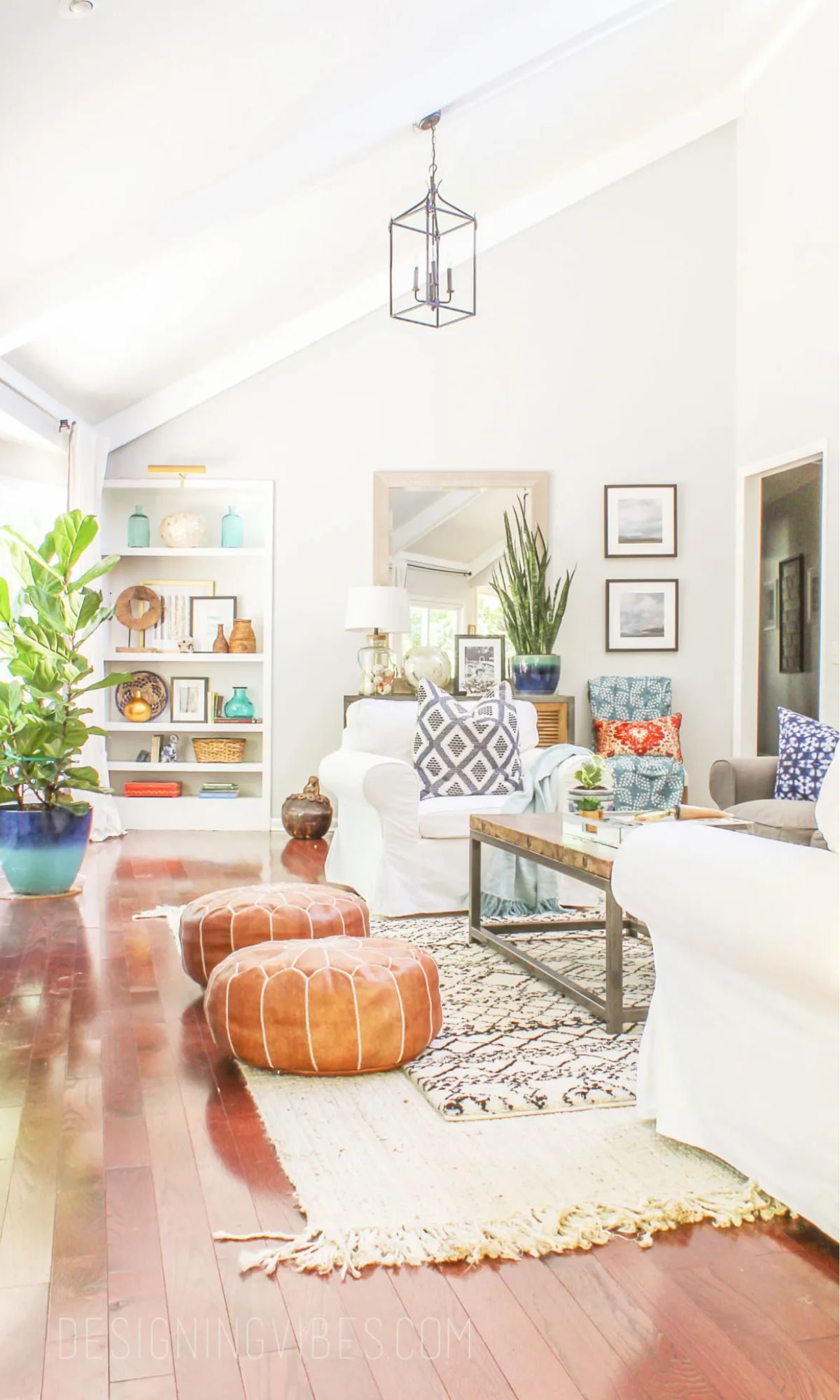
Coordinating Colors for Passive
Let’s take the guesswork out of building a palette around Passive. Here are my favorite coordinating colors:
- SW Extra White (trim)
- SW Argos (coordinating wall colors for other rooms)
- SW Nebulous White (coordinating wall colors for other rooms)
- SW Upward (bathroom or bedroom)
- SW Sea Salt (bathroom or bedroom)
- SW Grizzle Gray (accent wall. doors or cabintry)
- SW Serious Gray (accent wall. doors or cabintry)

Passive in a Whole-House Palette
Passive isn’t just a one-room wonder. Here’s how to use it as a unifying neutral across multiple spaces:
- Living Room: Passive on walls, SW Extra White trim, layered with warm-toned textiles
- Kitchen: Passive cabinets, white quartz countertops, brass hardware
- Primary Bathroom: Passive walls, Nebulous White ceiling, white oak vanity
- Guest Room: Lighter wall color like SW Olympus White with Passive on trim
- Office: Passive walls, moody contrast with SW Grizzle Gray built-ins
Passive vs. Other Popular Gray Paint Colors
When comparing Sherwin Williams Passive to other well-known grays, it’s all about subtle shifts in tone and undertone. Here’s how Passive stacks up against a few popular competitors:
Passive vs Repose Gray
Repose Gray is a warmer, more balanced gray that leans slightly greige. If Passive feels too cool or flat in your space, Repose Gray might be the cozier alternative. Its beige and taupe notes make it versatile for both traditional and modern settings.
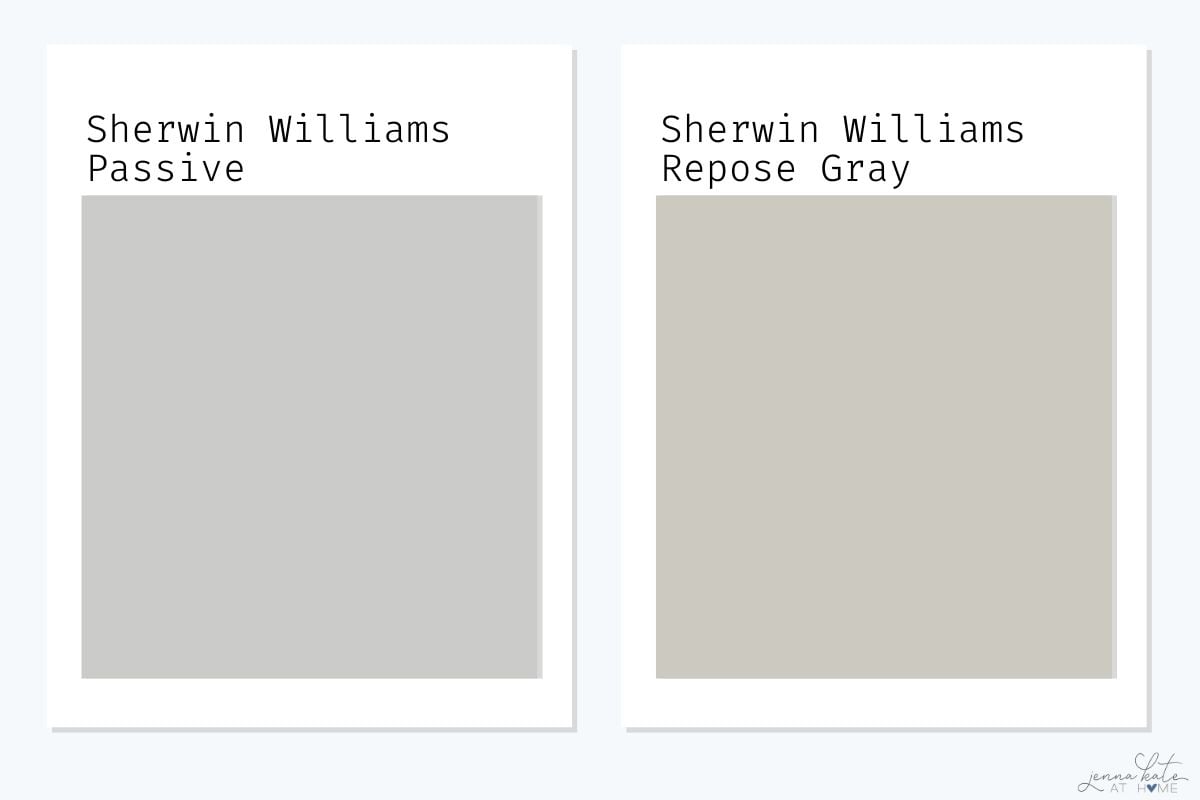
Passive vs Agreeable Gray
Agreeable Gray is the go-to greige for many homeowners. It’s significantly warmer than Passive and works beautifully in open concept homes or areas that need warmth. If your furnishings skew warm or your lighting is limited, Agreeable Gray may blend more effortlessly.
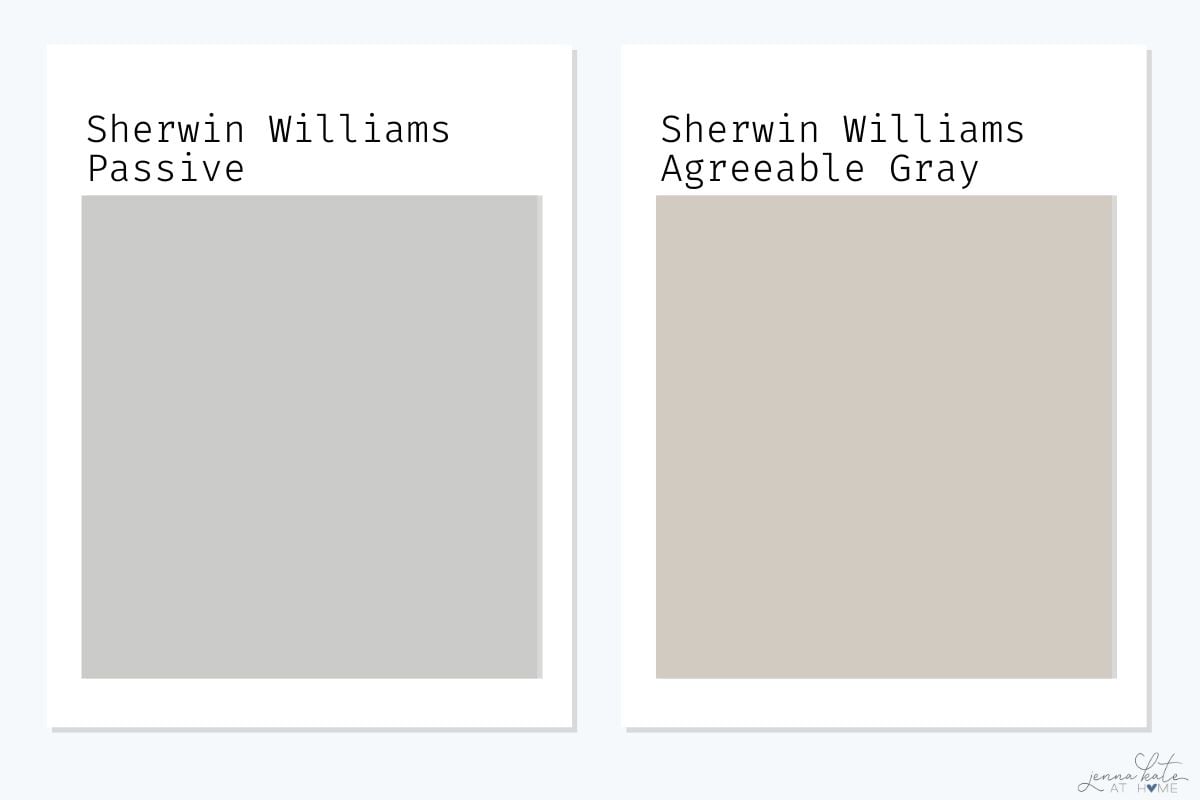
Passive vs Light French Gray
Light French Gray has a similar level of depth but can appear slightly more moody with subtle blue-violet undertones. In side-by-side swatches, Light French Gray reads a bit darker and more sophisticated, while Passive feels softer and more flexible.
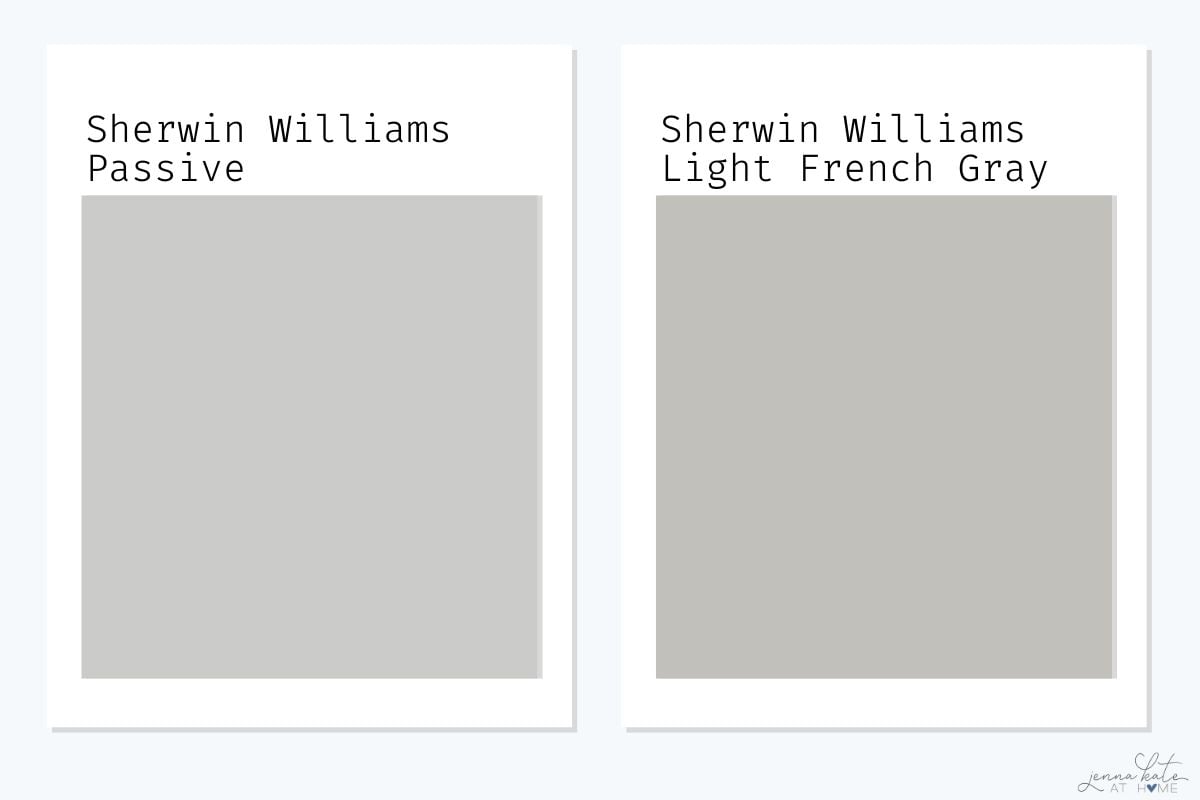
Passive vs Nebulous White
Nebulous White is Passive’s airier cousin. If Passive feels just a hair too gray, Nebulous White is a brighter option with a soft gray cast and cool undertones. It’s especially nice in smaller spaces where you want a light and airy look.
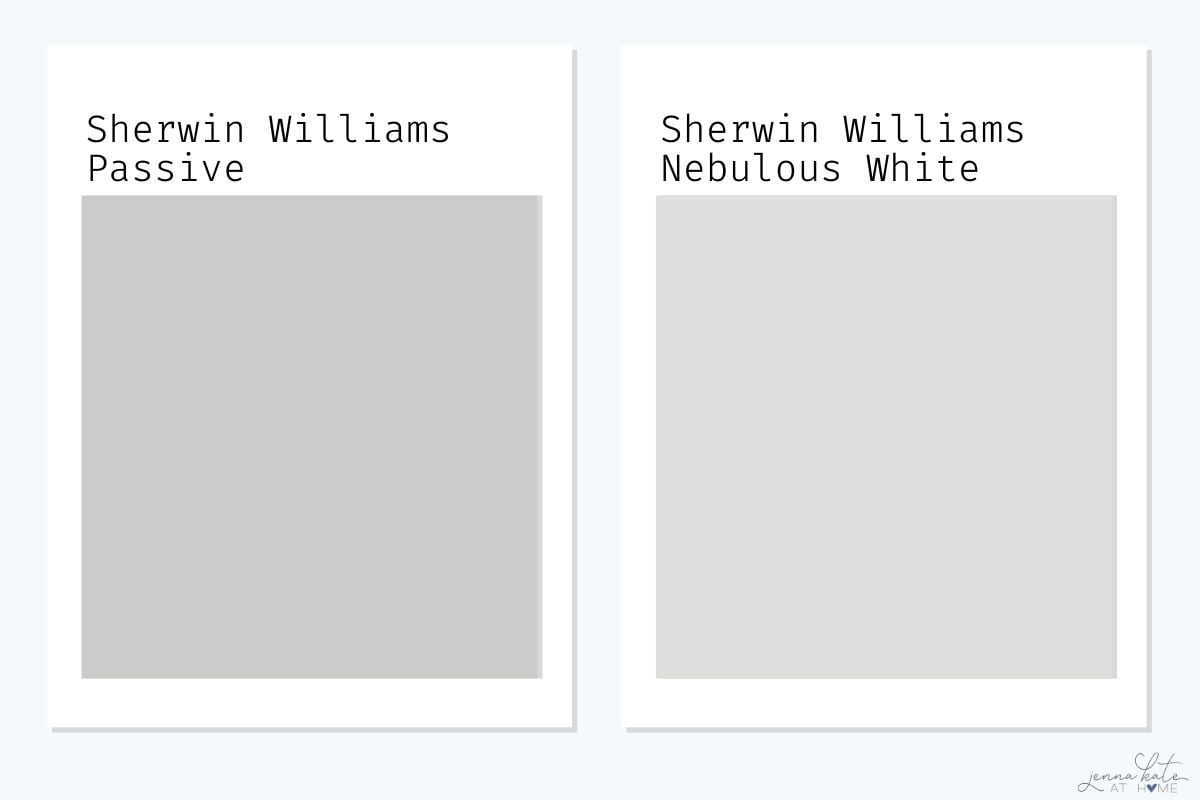
Passive vs On The Rocks
On the Rocks is another Sherwin Williams cool gray, but it has more of a green undertone in certain lighting. Compared to Passive, On the Rocks can feel fresher and more modern, but slightly less neutral depending on what’s around it.
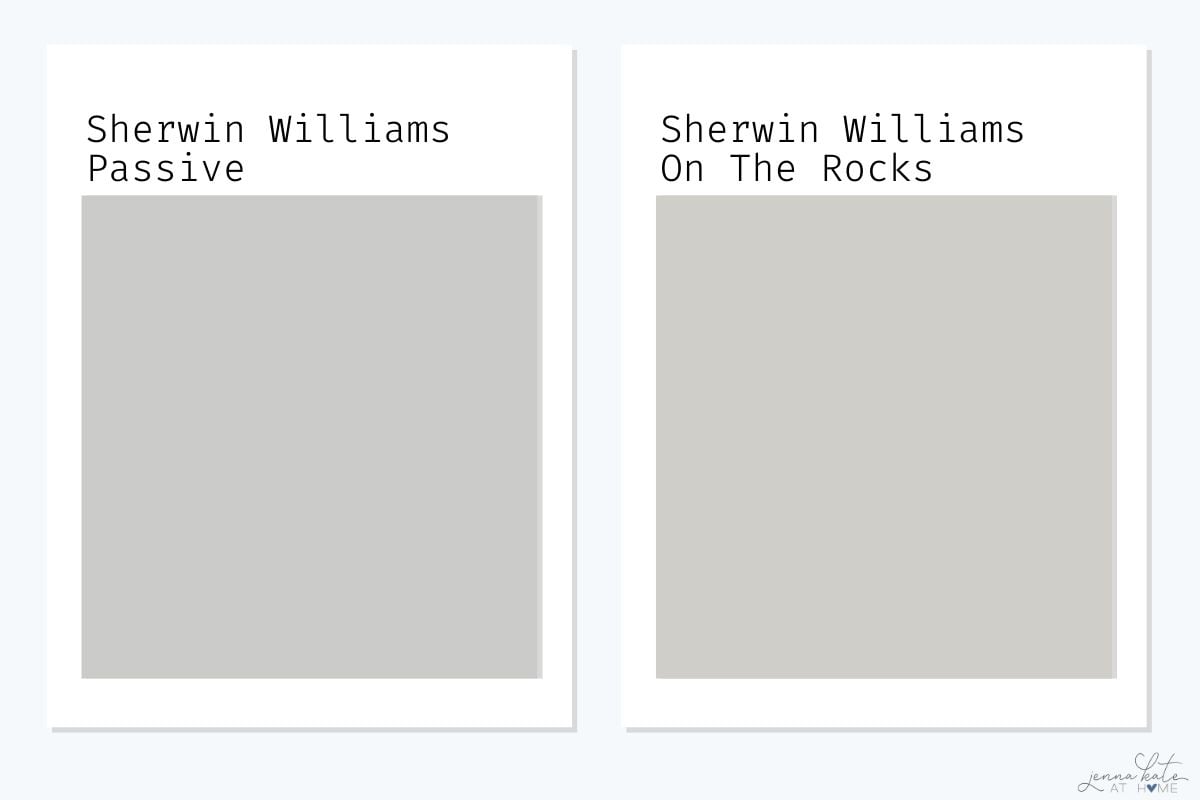
Passive vs Benjamin Moore Stonington Gray
Stonington Gray is often cited as a comparable color to Passive. Both have cool undertones, but Passive leans bluer while Stonington can read more neutral gray in most light. If you’ve used both in your home, you’ll notice they play nicely together in adjacent spaces, but they are not interchangeable.
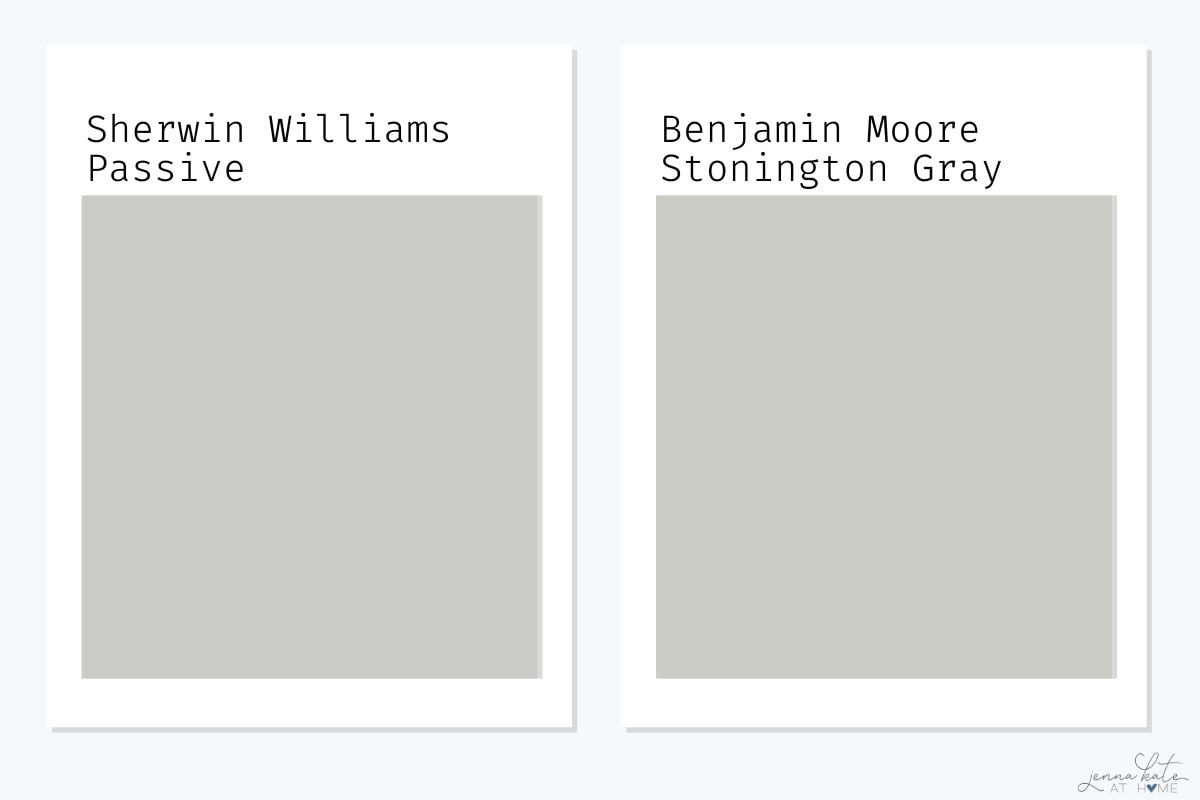
No matter which gray you’re considering, side-by-side swatches tell the real story—lighting, flooring, and decor all shift perception more than you might expect.
Where Passive Looks Best (And Where It Doesn’t)
This color is surprisingly flexible. Some of my favorite uses:
- Bedrooms – Calm and restful
- Bathrooms – Works beautifully with marble, brass, and clean lines
- Living Rooms – If you get good natural light
- Kitchens – On walls or cabinetry, especially paired with white quartz
- Exteriors – Only if paired with high-contrast trim (black or charcoal)
Avoid it in basements or north-facing rooms without supplemental lighting—it can look flat or too cold.
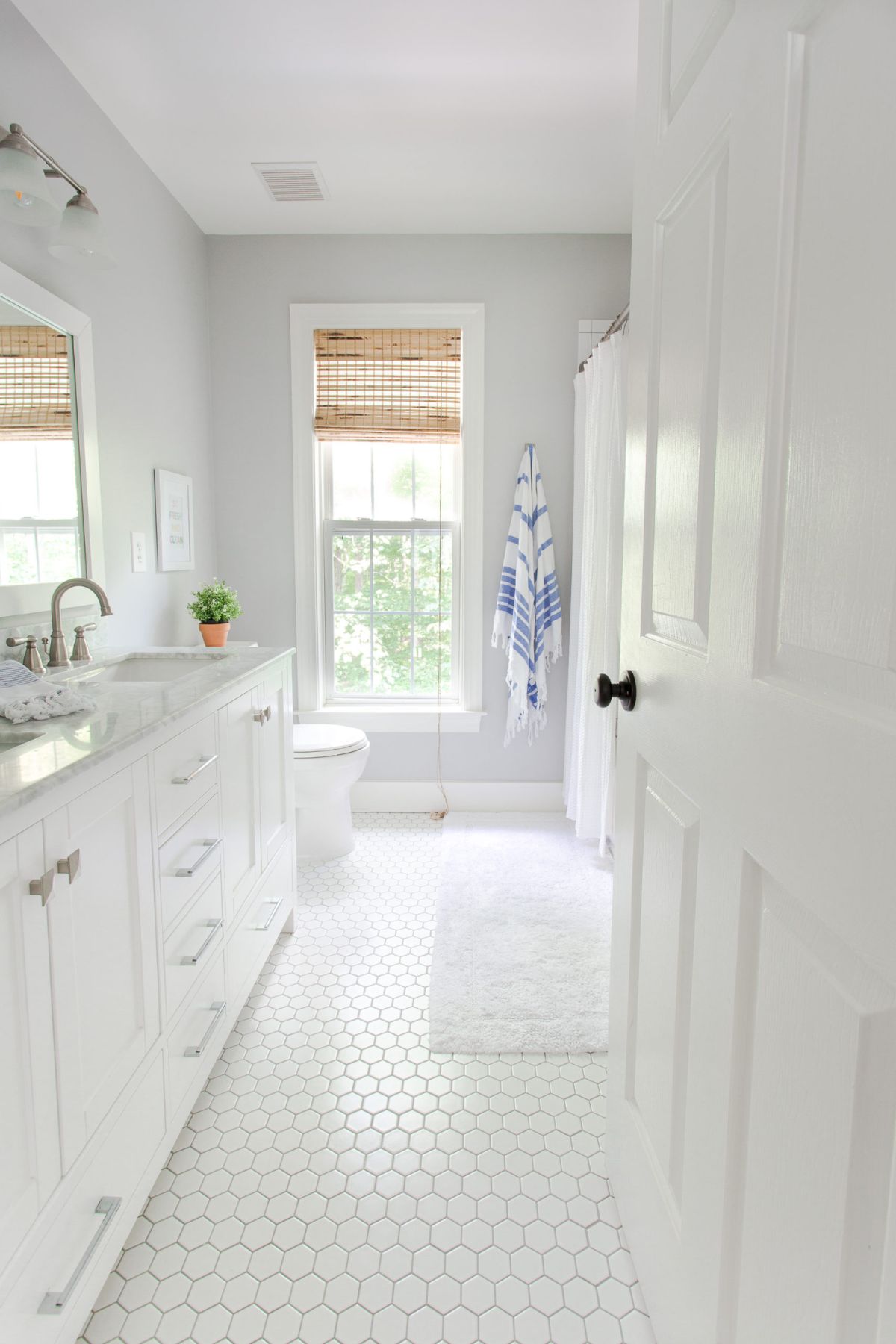
Frequently Asked Questions
It can. In north-facing rooms or spaces with cooler decor, the blue undertones may show up more prominently. Always test it in your space before committing.
Not necessarily. If you have plenty of natural light or warm accents like brass, wood, or warm-toned rugs, Passive can balance beautifully. It’s more about what you pair it with.
Passive can look dull in darker spaces, especially those without windows. If you love the tone but need something lighter, consider lightening it by 50% or try Nebulous White.
Sherwin Williams Pure White and Extra White are excellent choices. They keep the contrast crisp and enhance Passive’s clean, cool undertone.
Yes! It creates a soft, modern feel on kitchen cabinets or bathroom vanities—especially paired with white counters and brass or black hardware.
You can, but test it carefully. Direct sunlight will wash it out, and it might appear too light unless paired with a deeper accent like SW Iron Ore or Tricorn Black.

Final Thoughts: Is Passive Right for You?
Choose Passive if:
- You want a true cool gray that doesn’t lean too blue or green
- Your space has great light (south or west-facing especially)
- You love mixing warm elements (wood, brass) with cool backdrops
Skip Passive if:
- You want a warm or cozy vibe
- Your room is dark or north-facing
- You hate undertone surprises
Still unsure? Start with a sample in a secondary space like a guest bath or hallway and live with it for a few days.

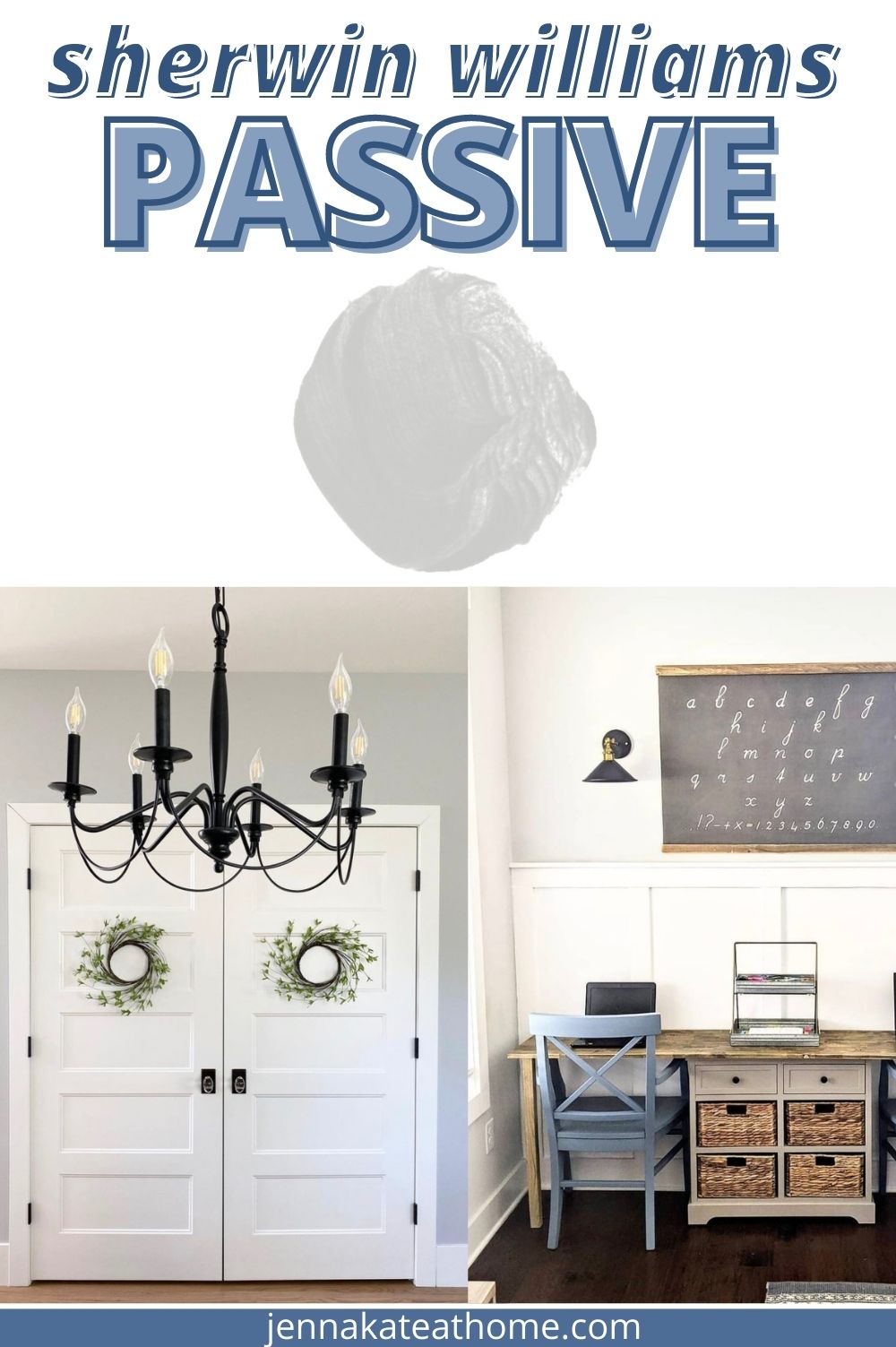

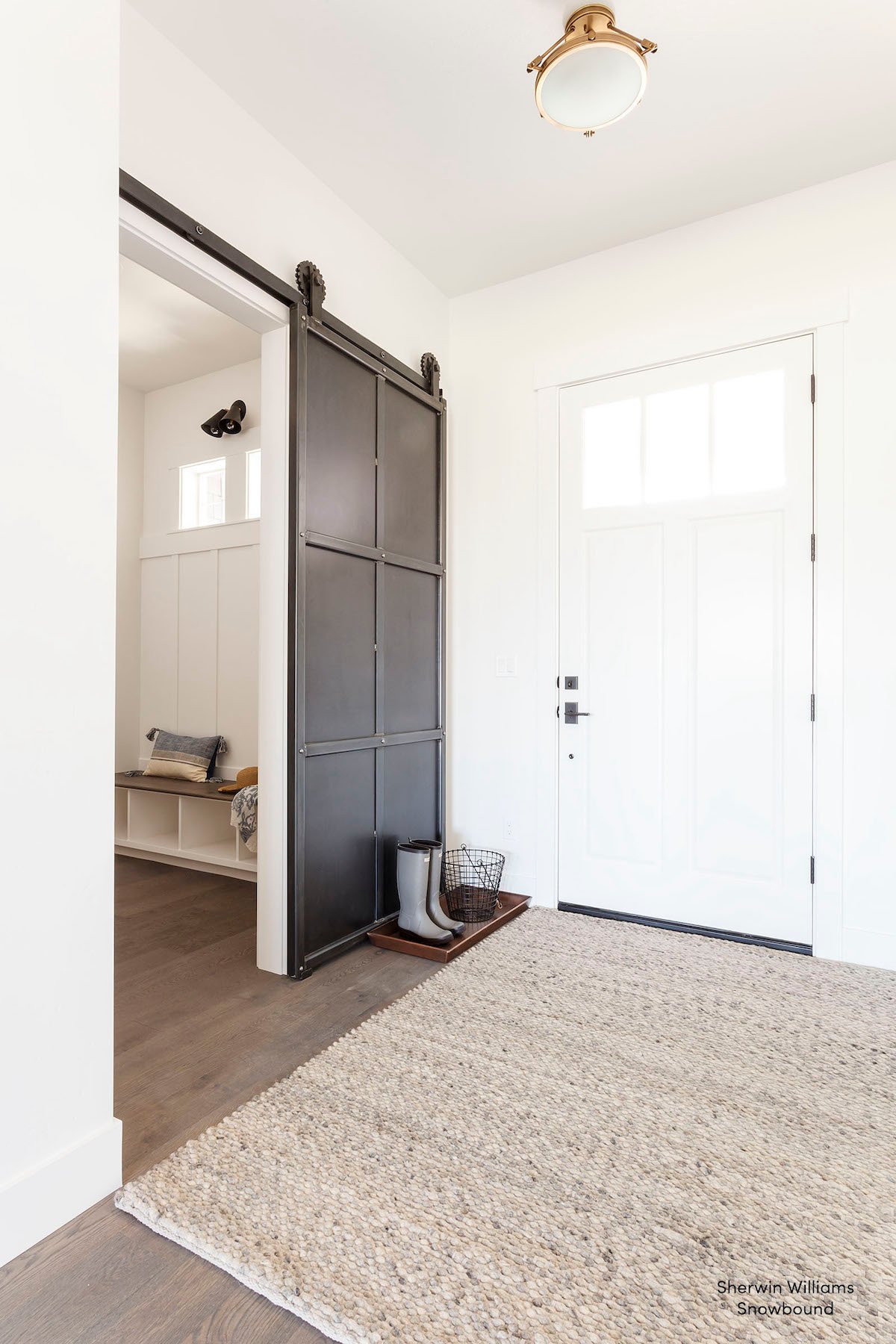
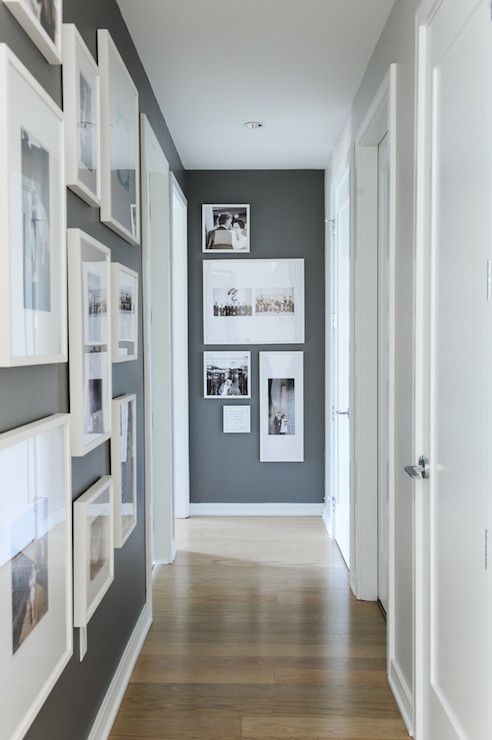
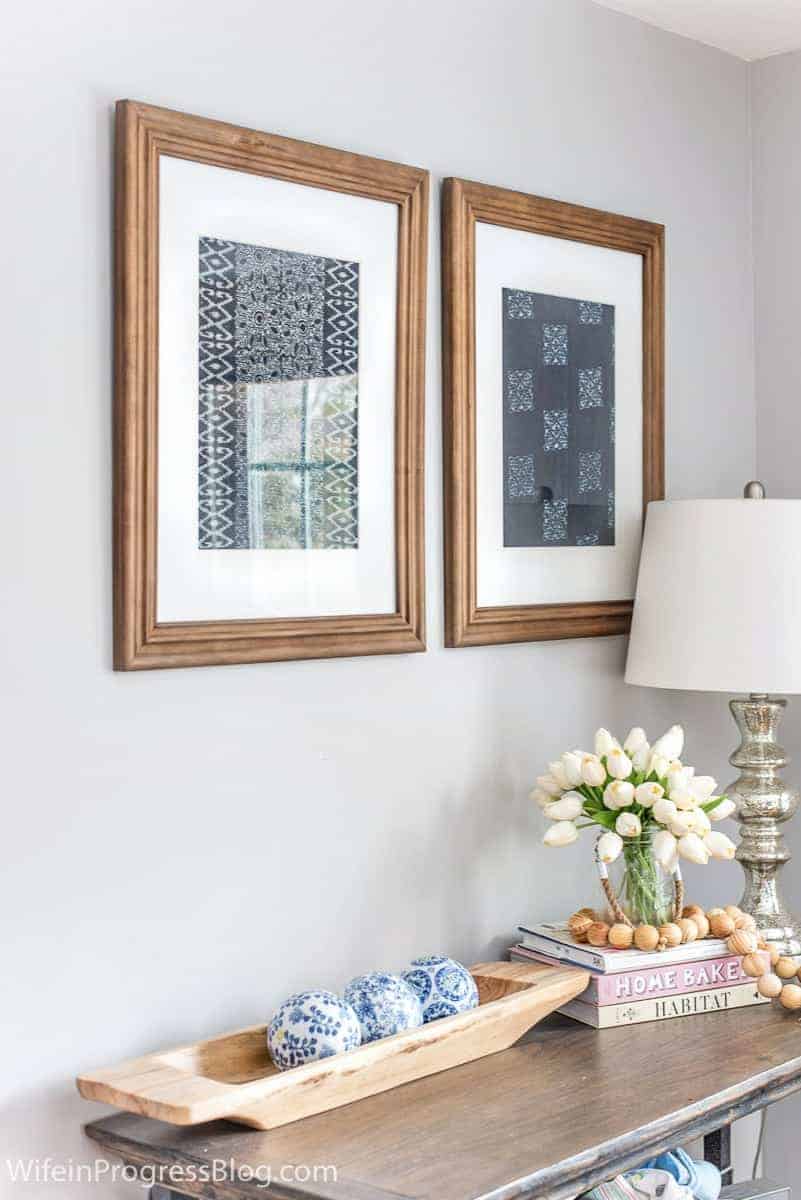
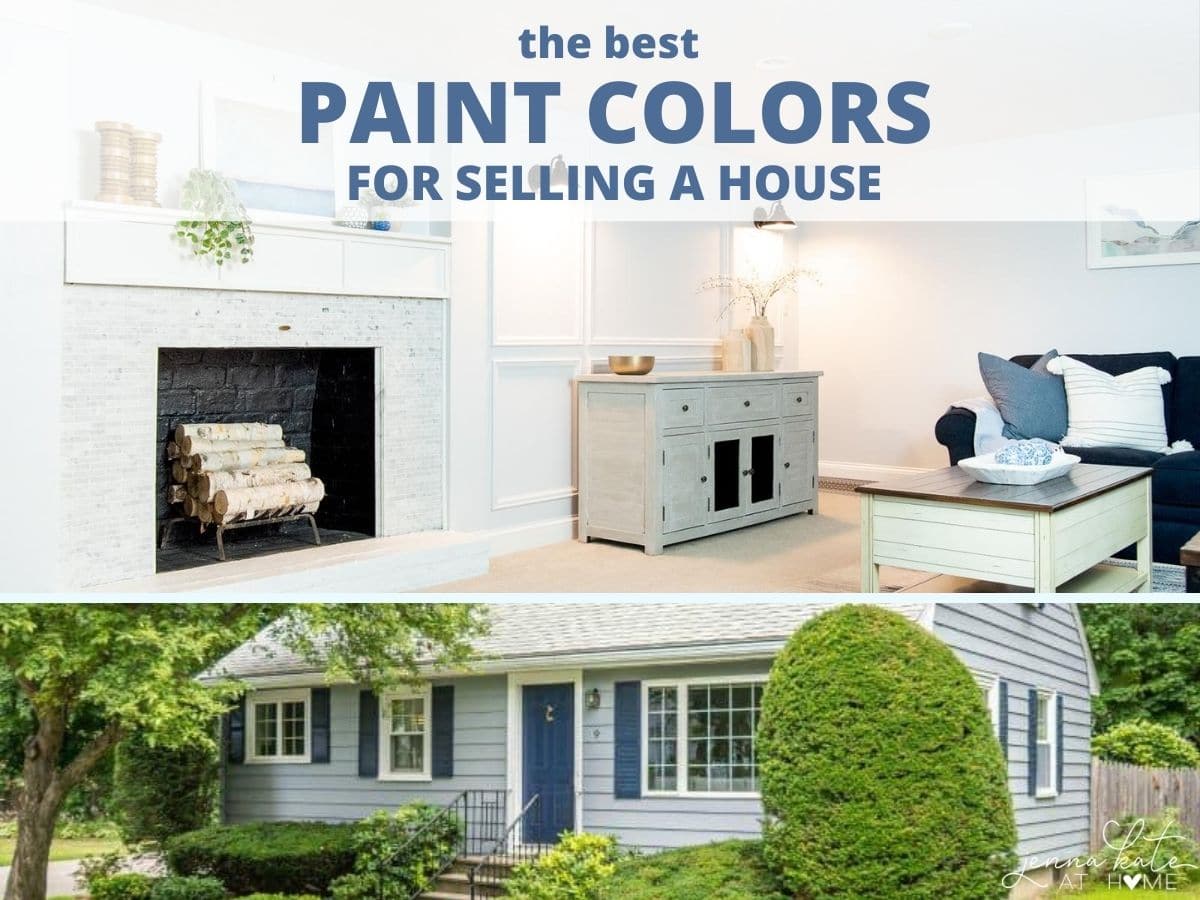

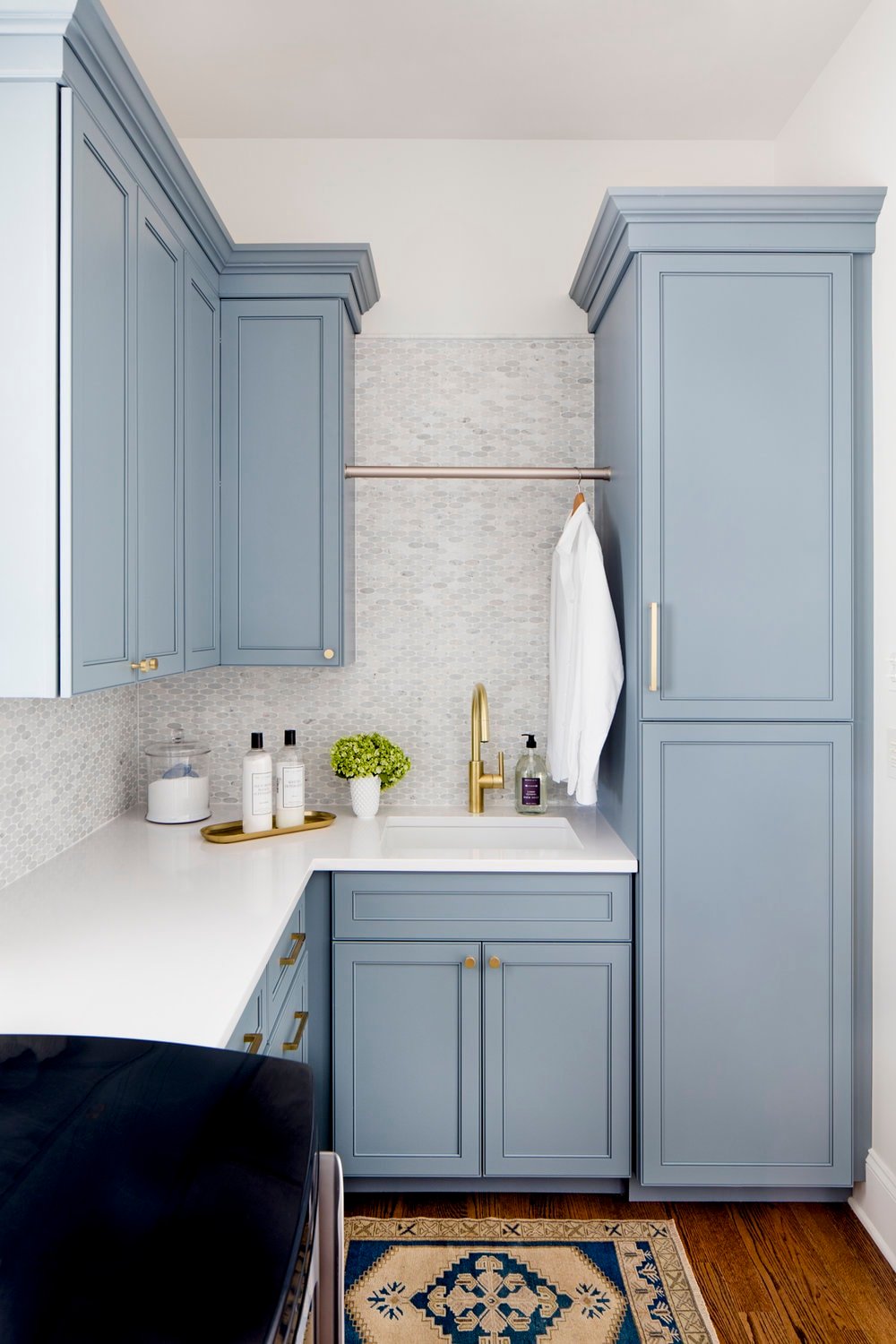
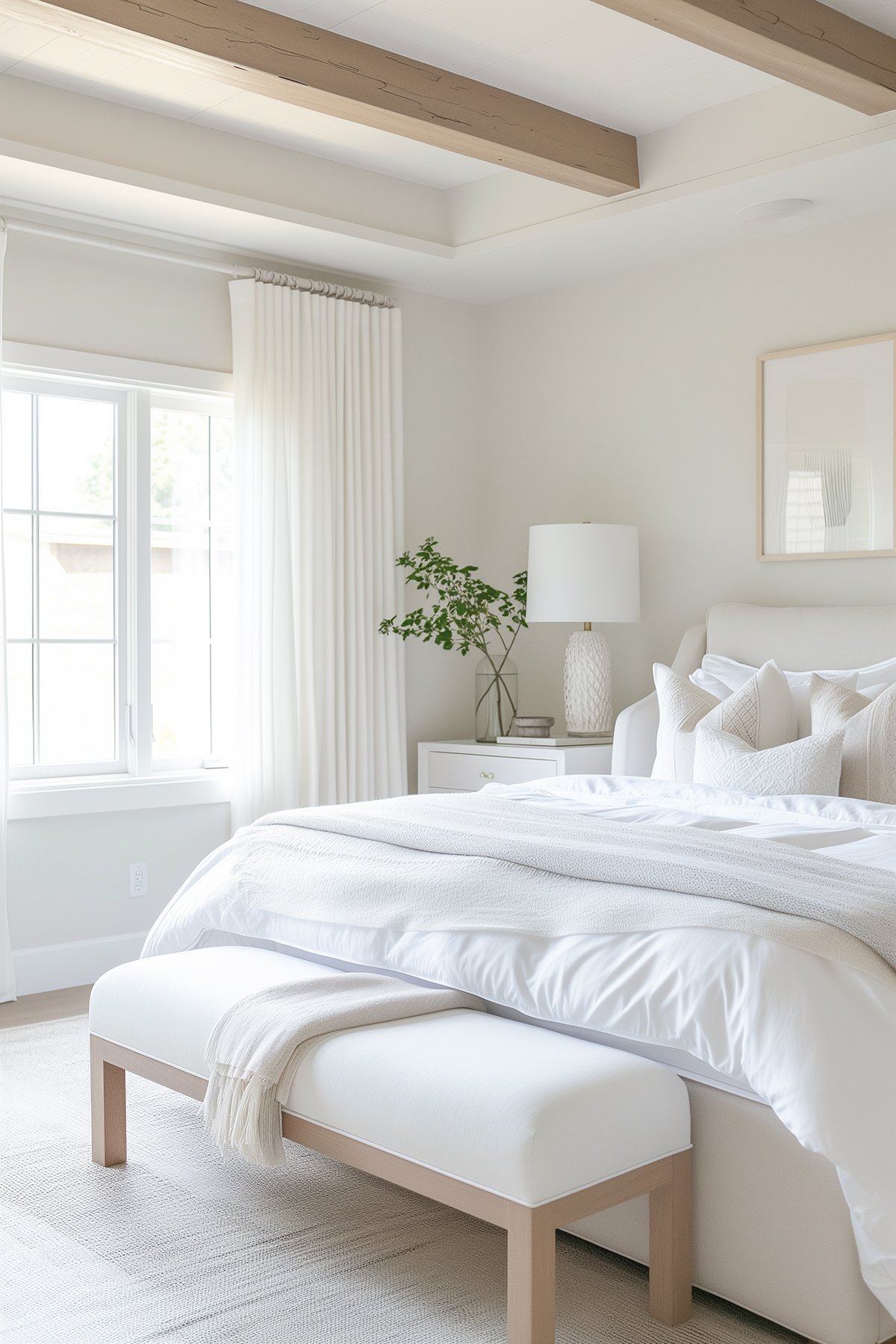
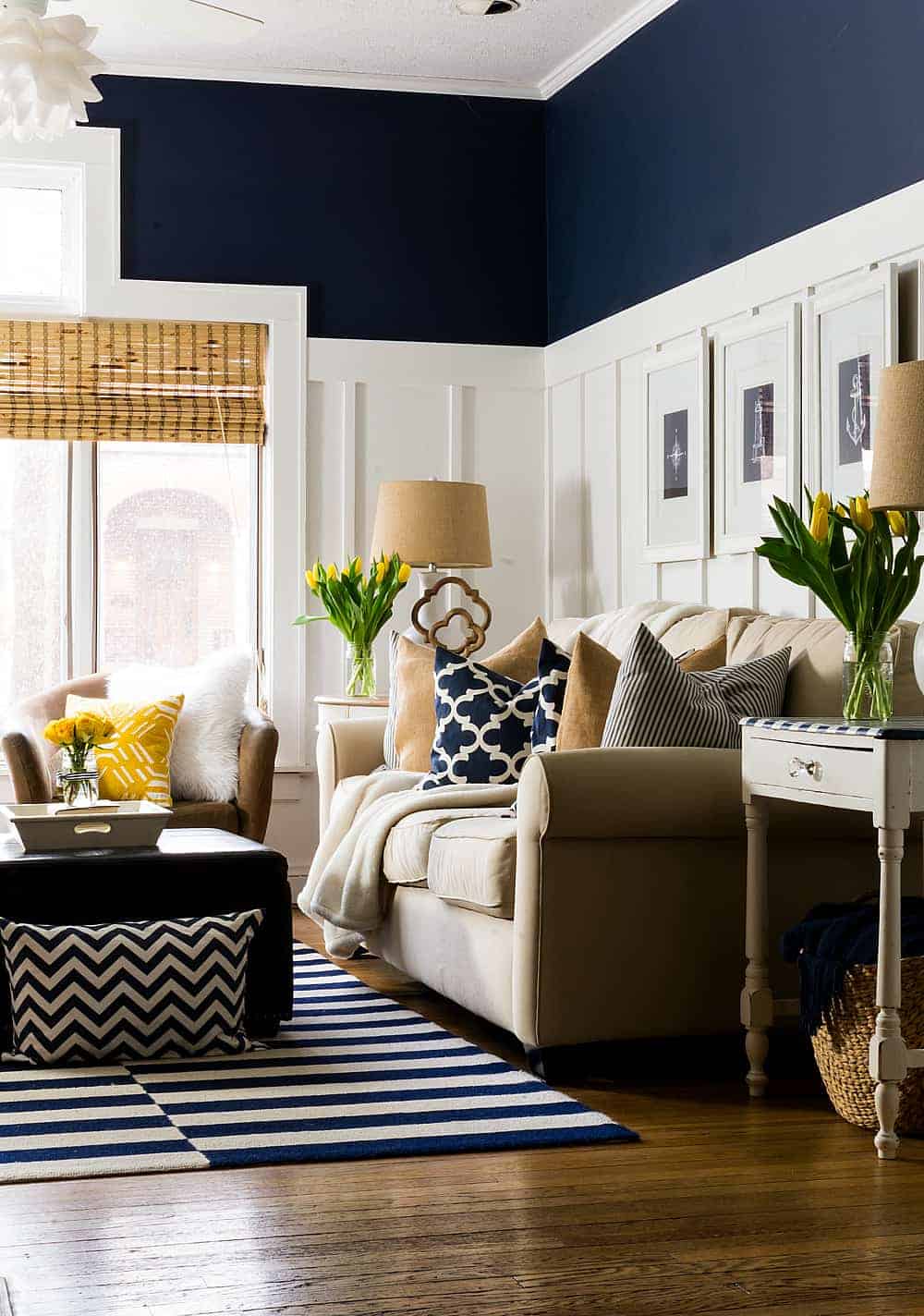
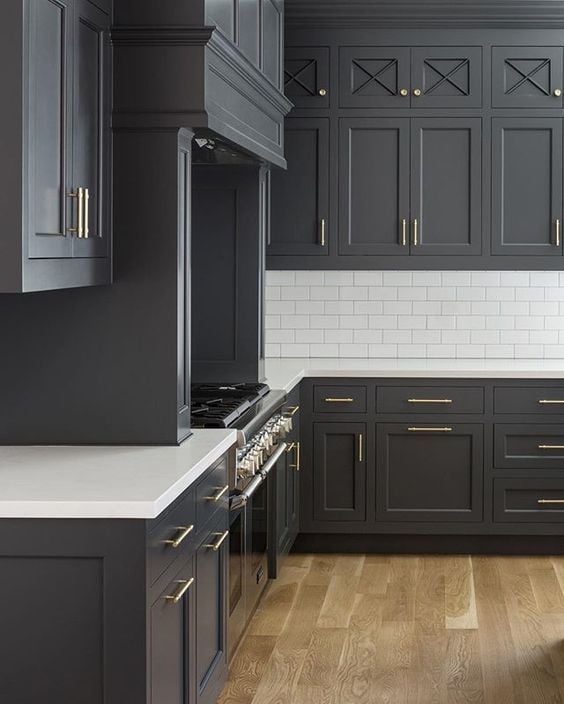
Hello Jenna:
My contractor asked for my whole house color today. Love this blog! I used Colonnade Gray SW in my old home and loved it. Curious what you thought of this color? Sandi
I love it! It’s a great greige color! I’ve only used it for a couple of exterior projects but it’s beautiful for walls or cabinets too!